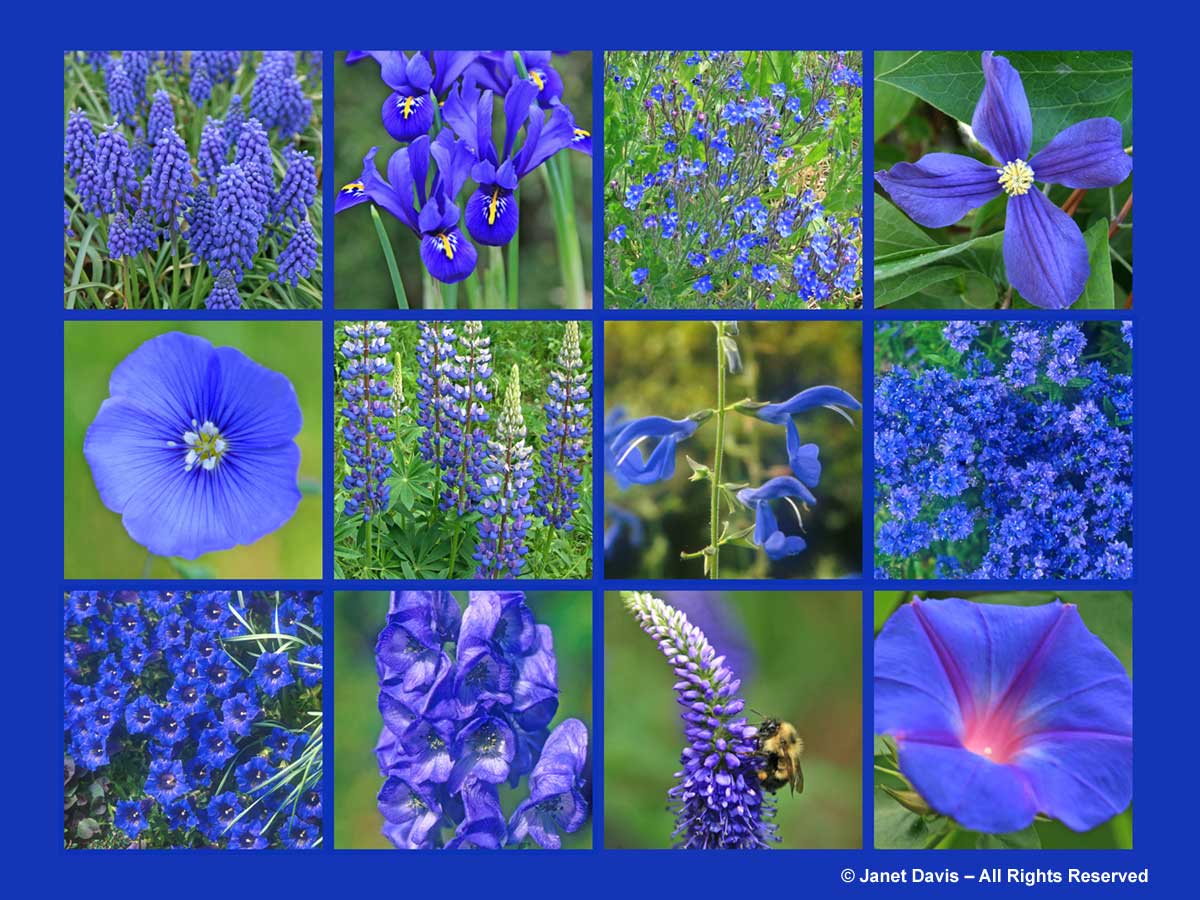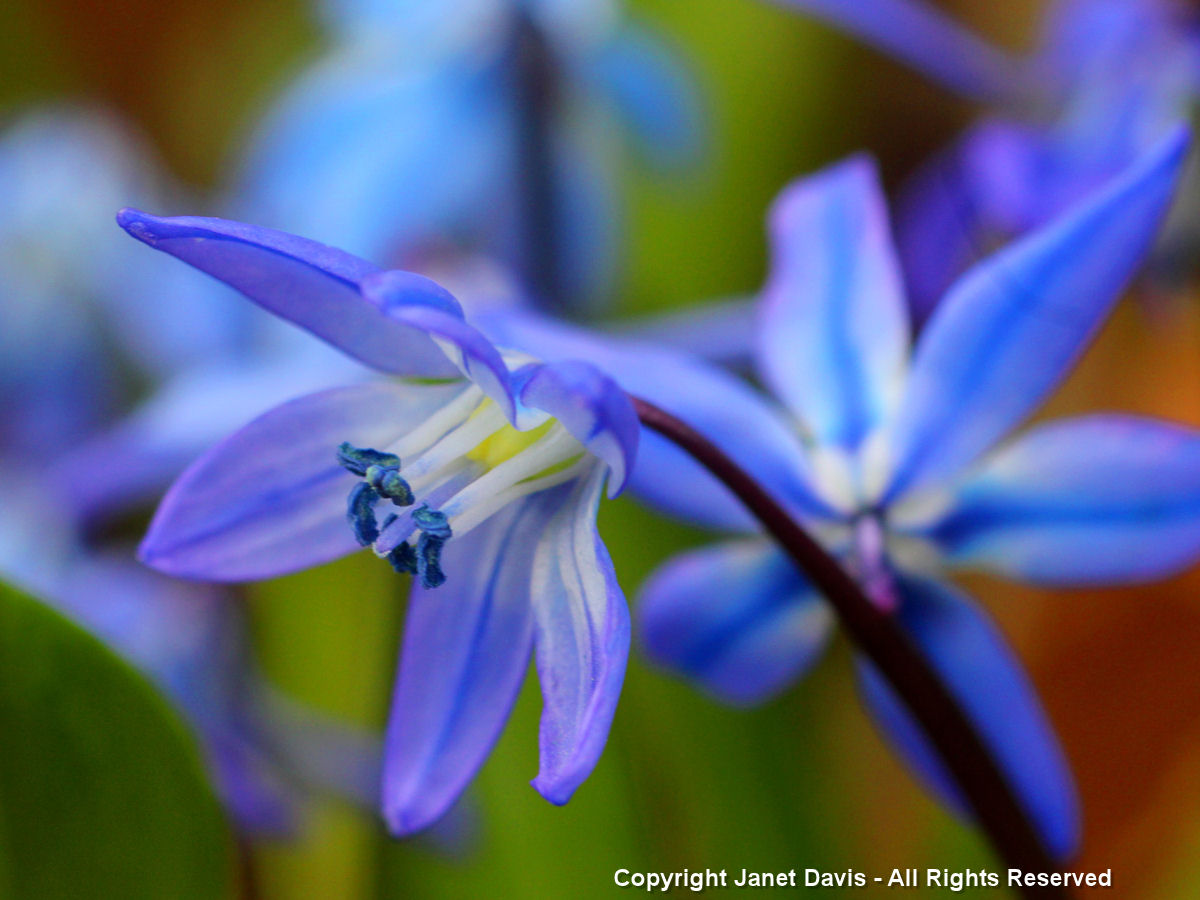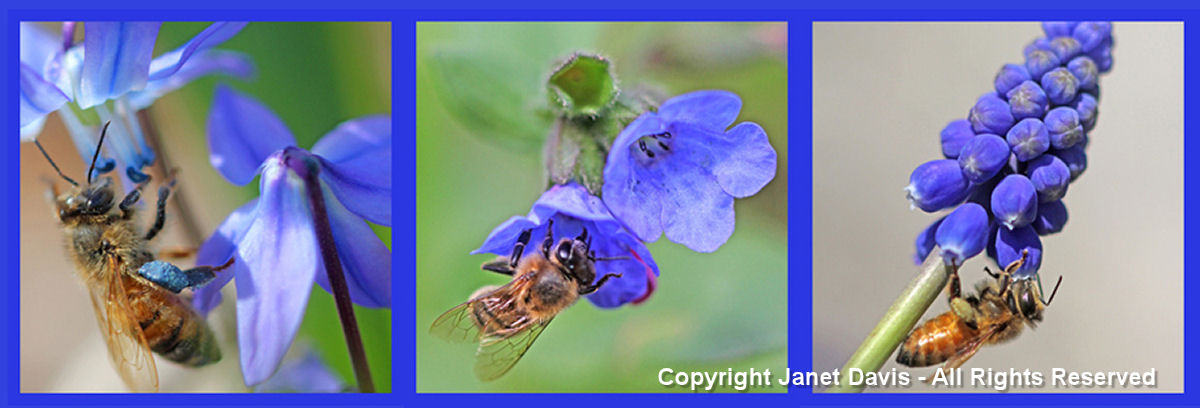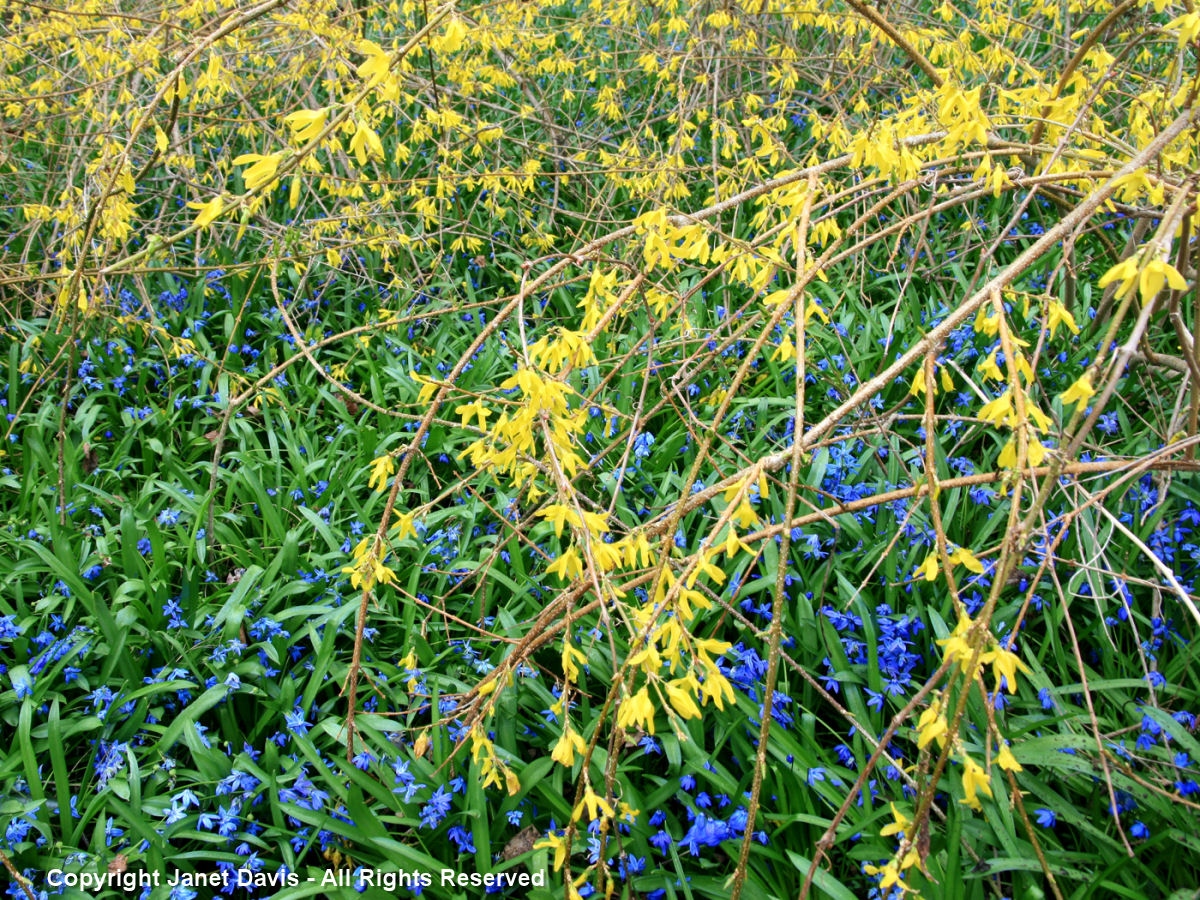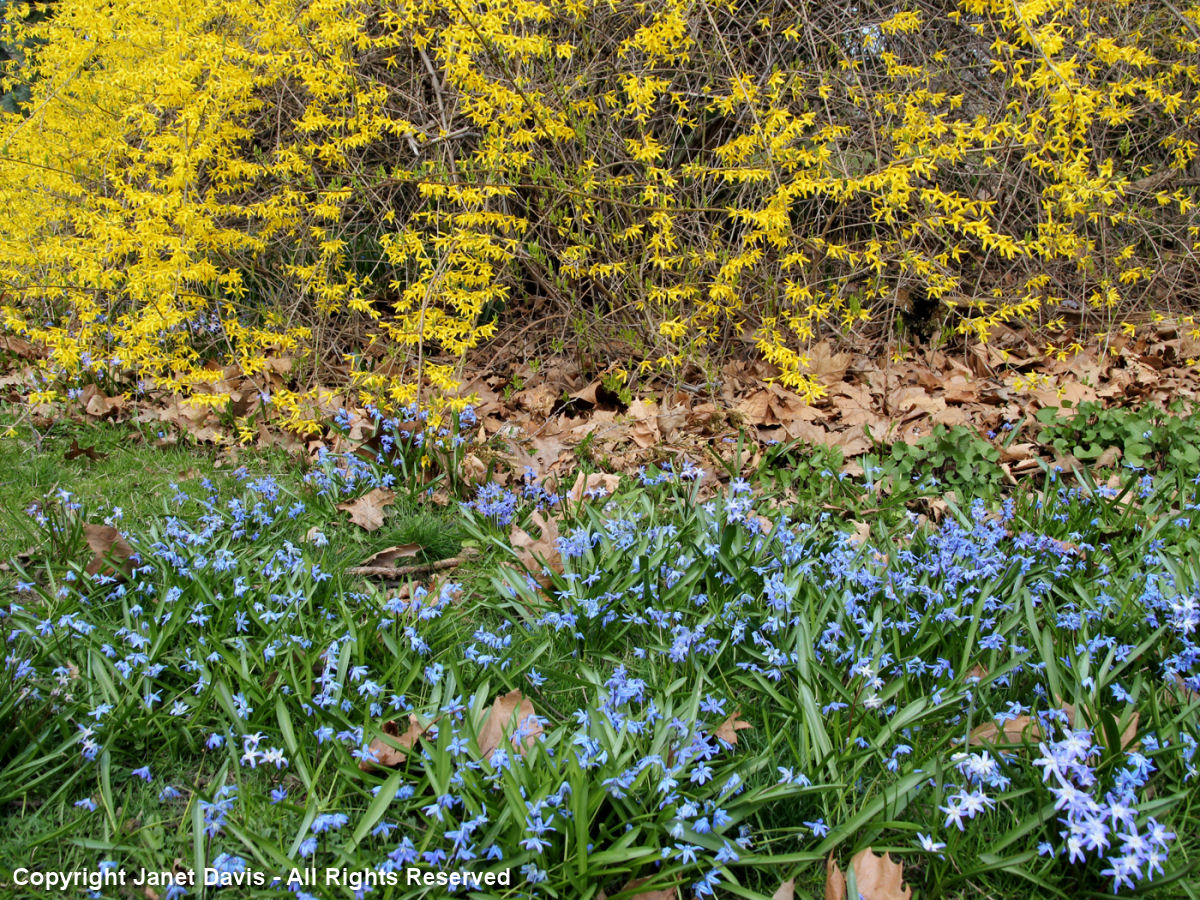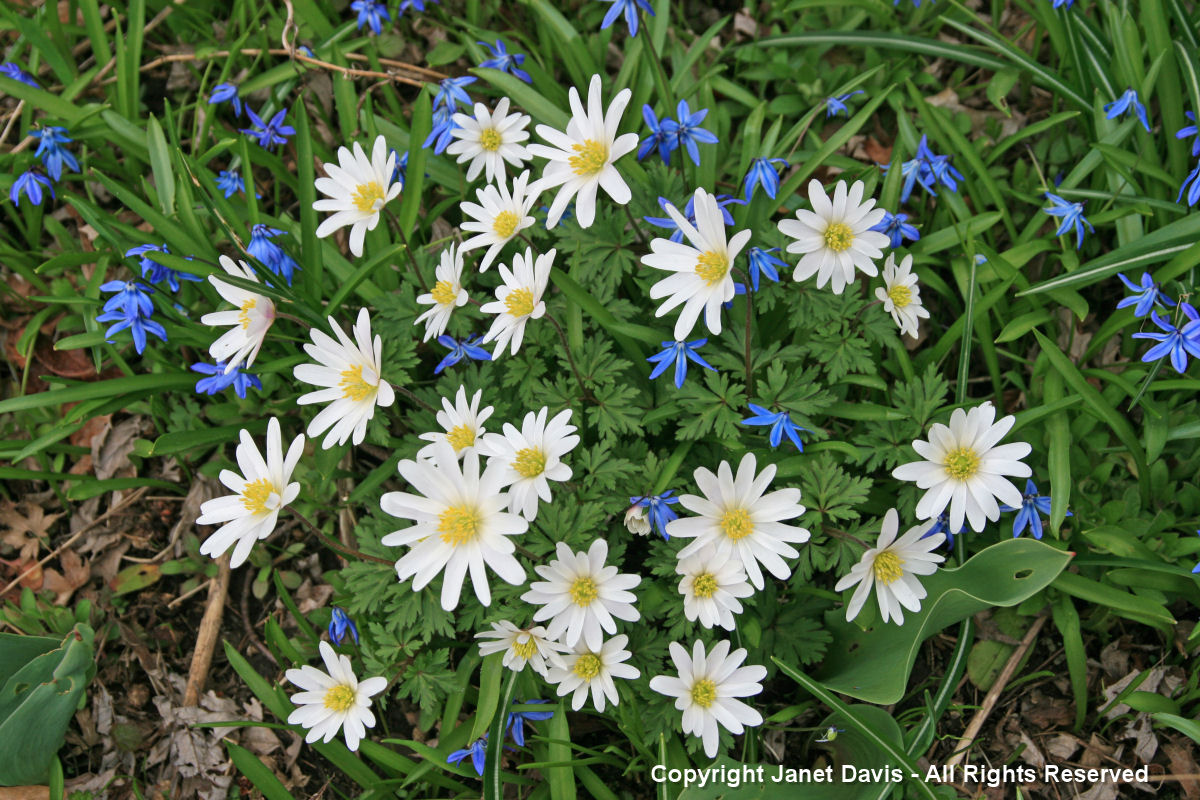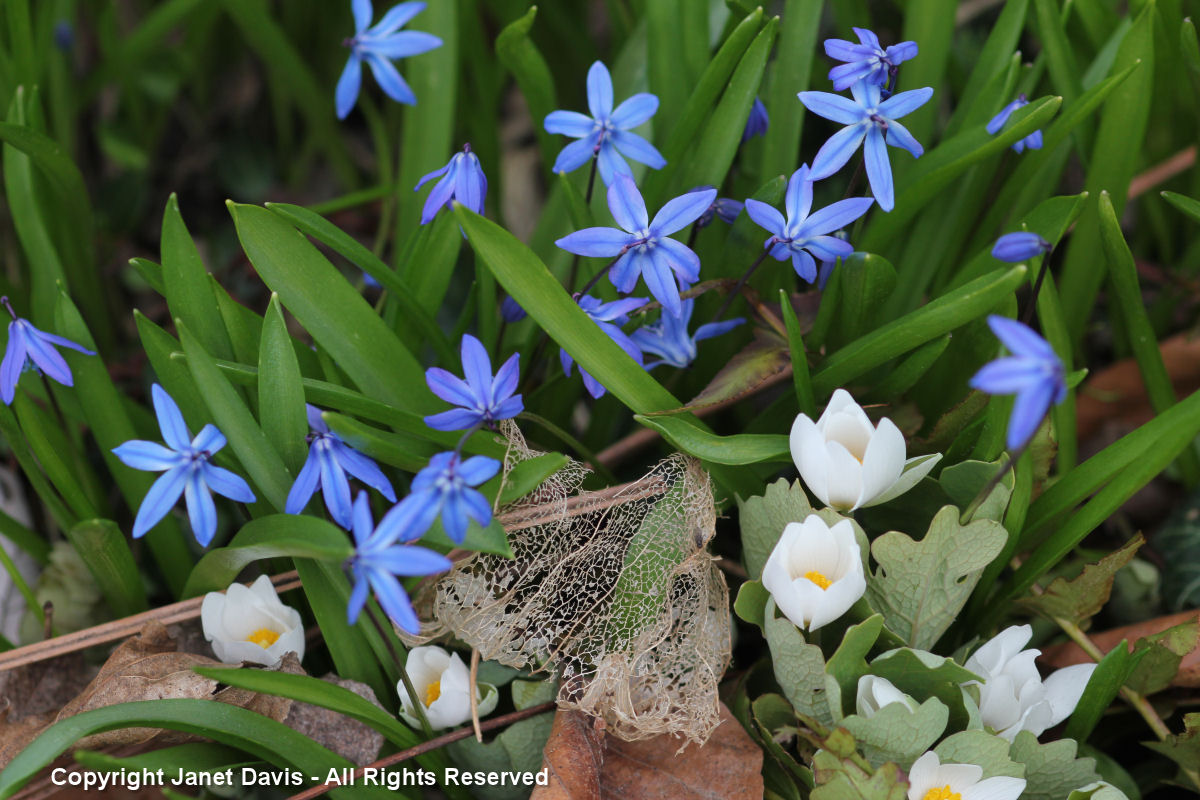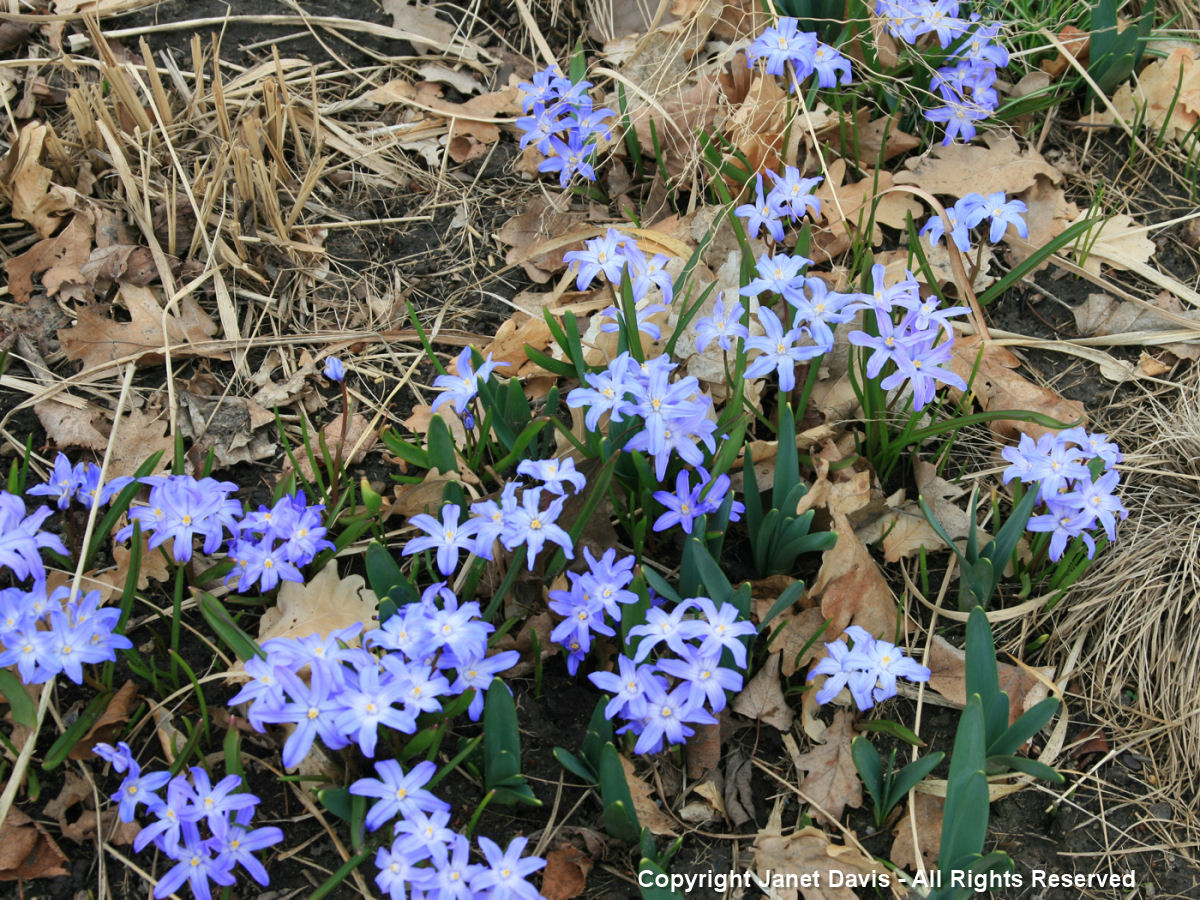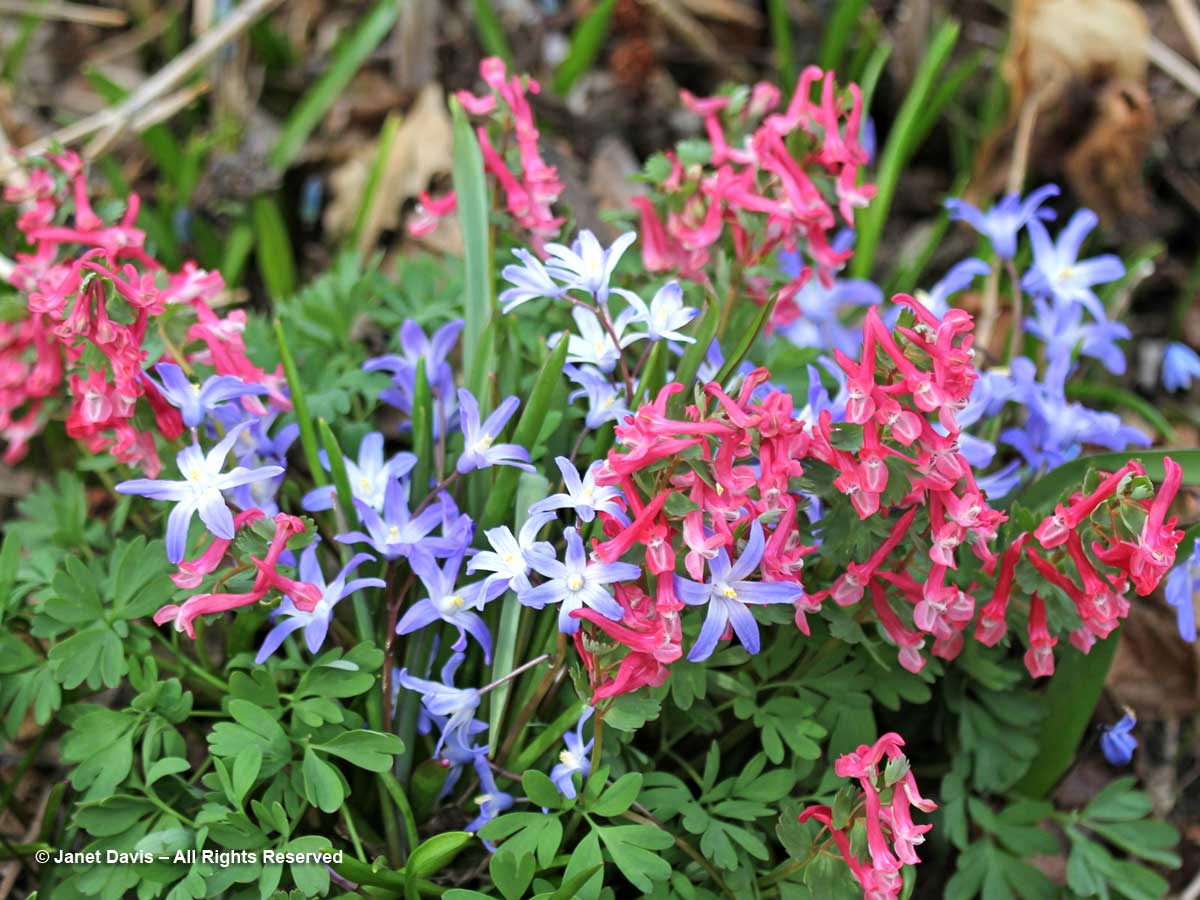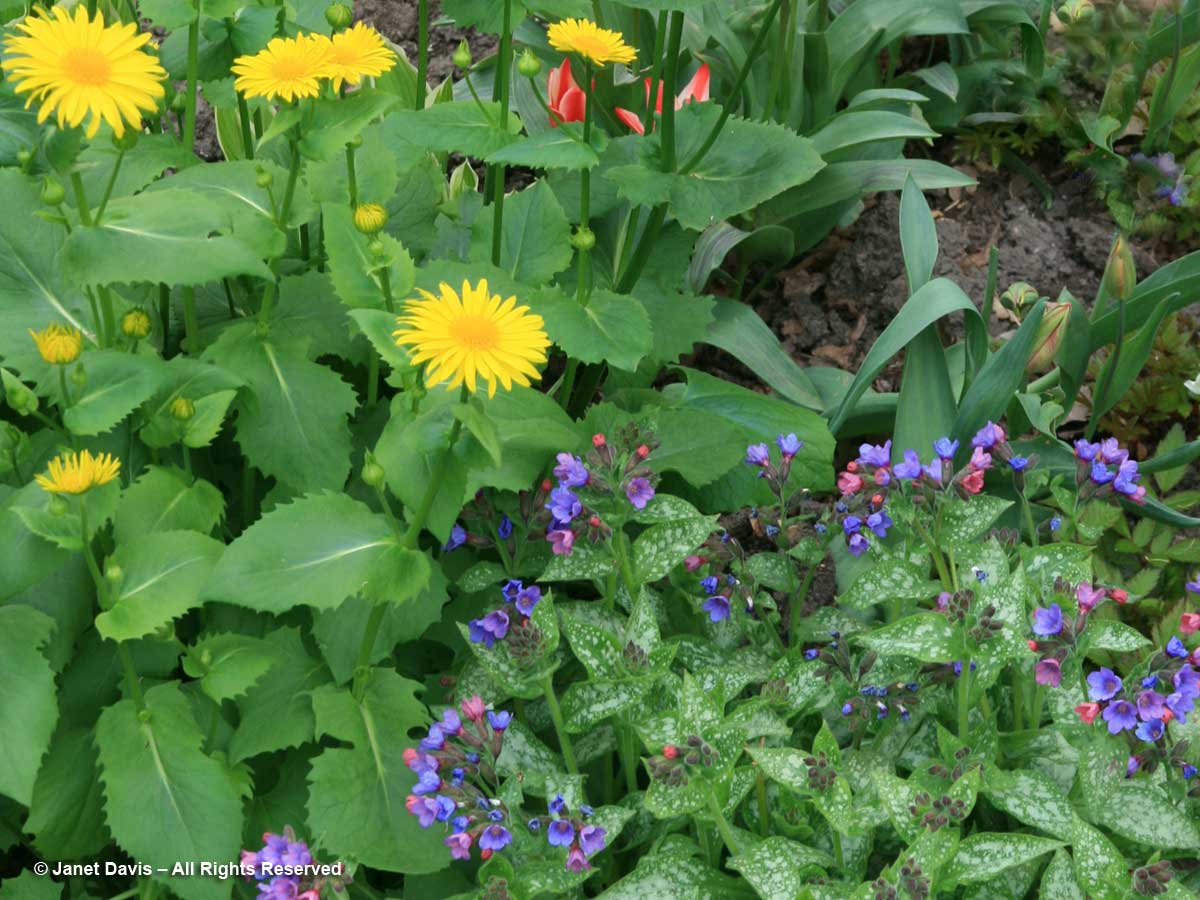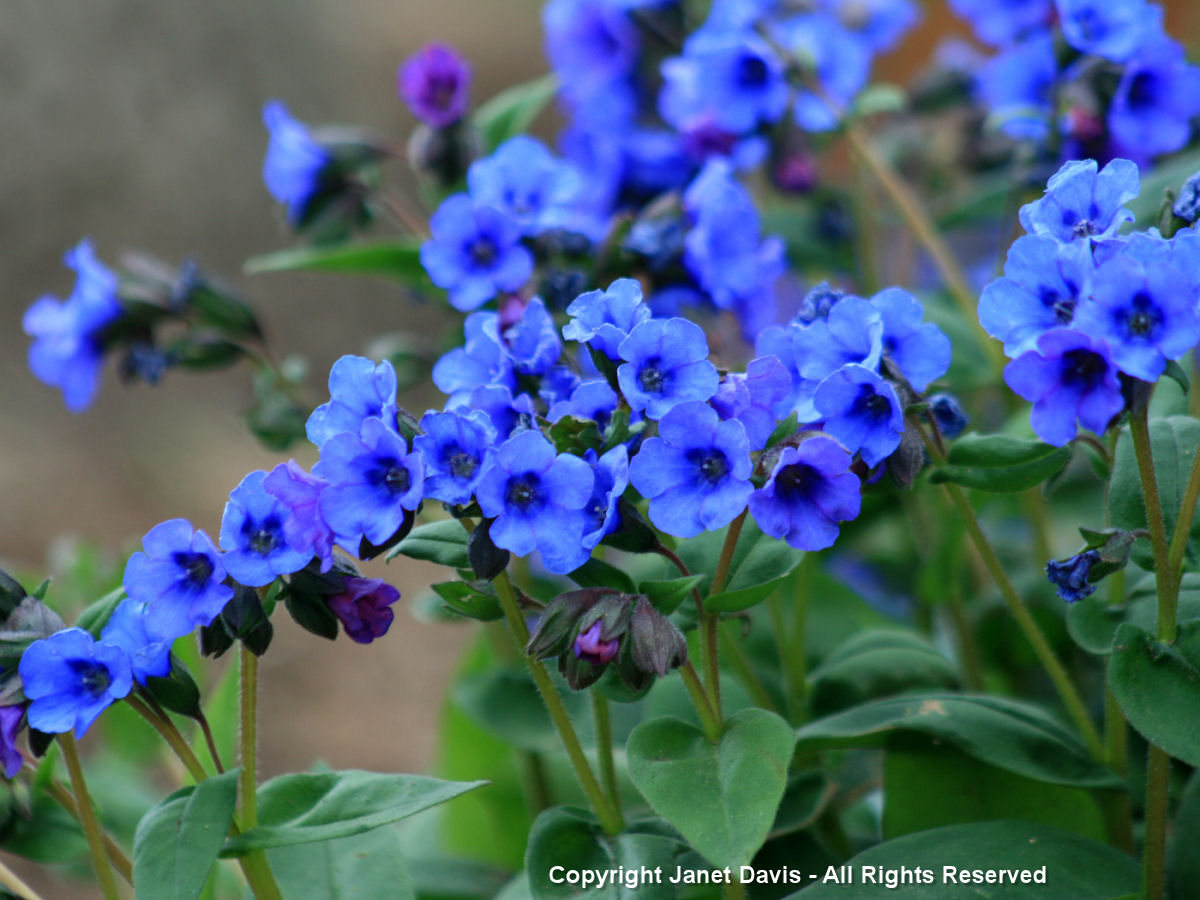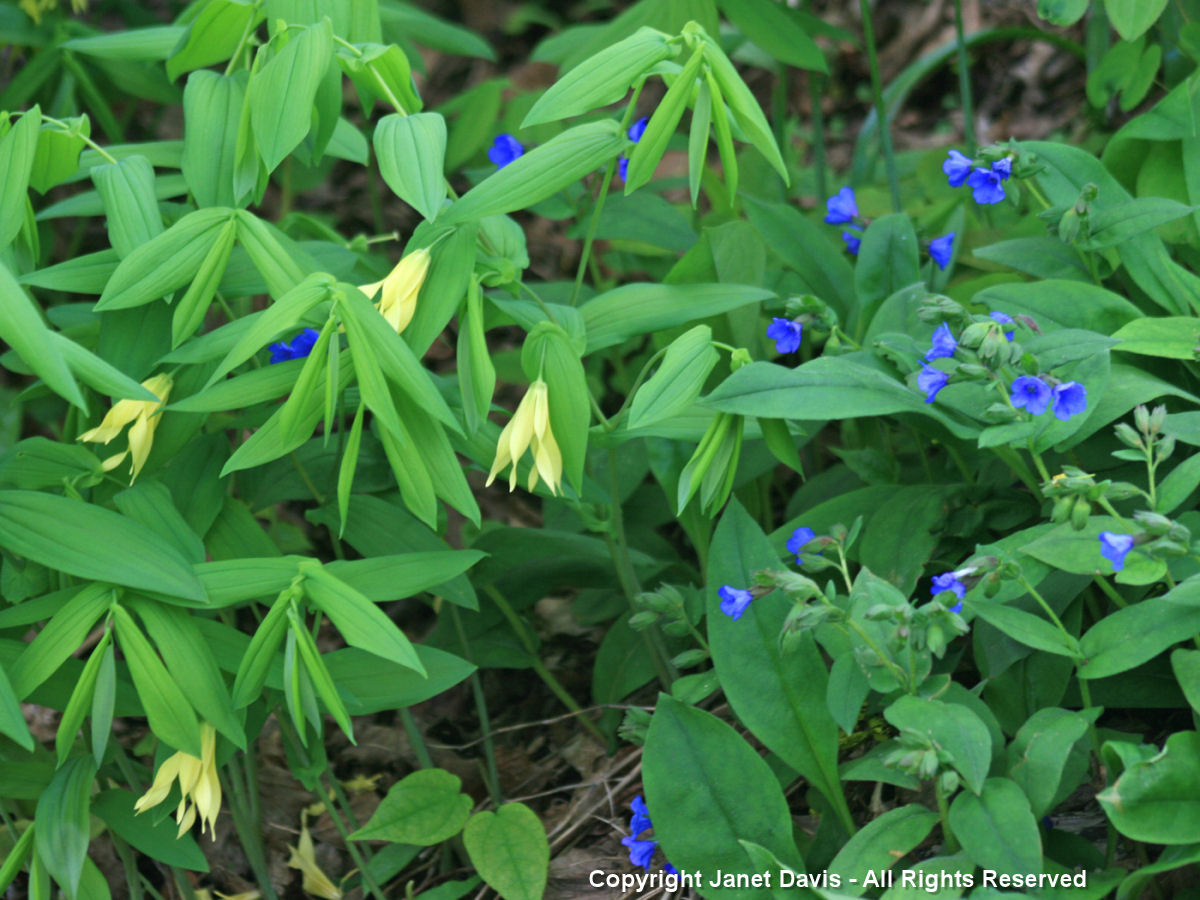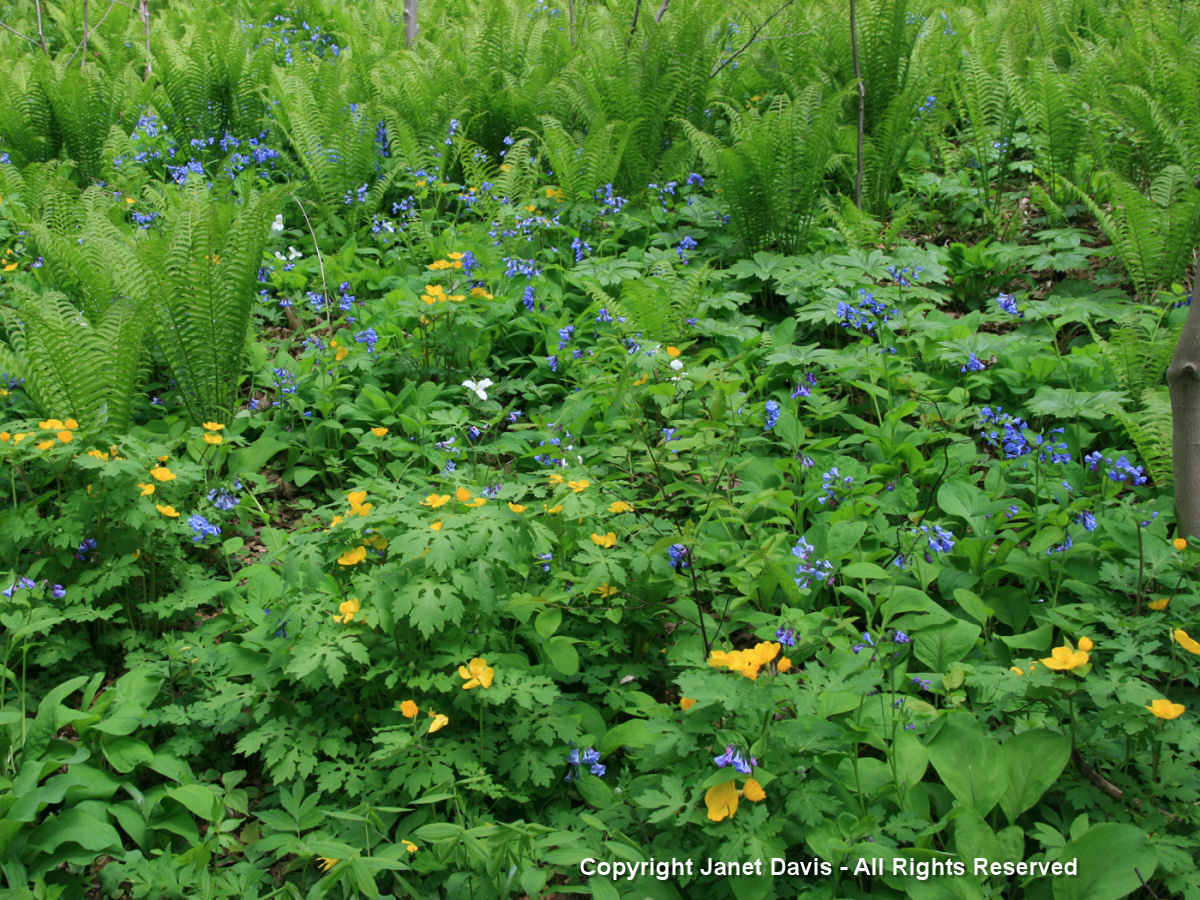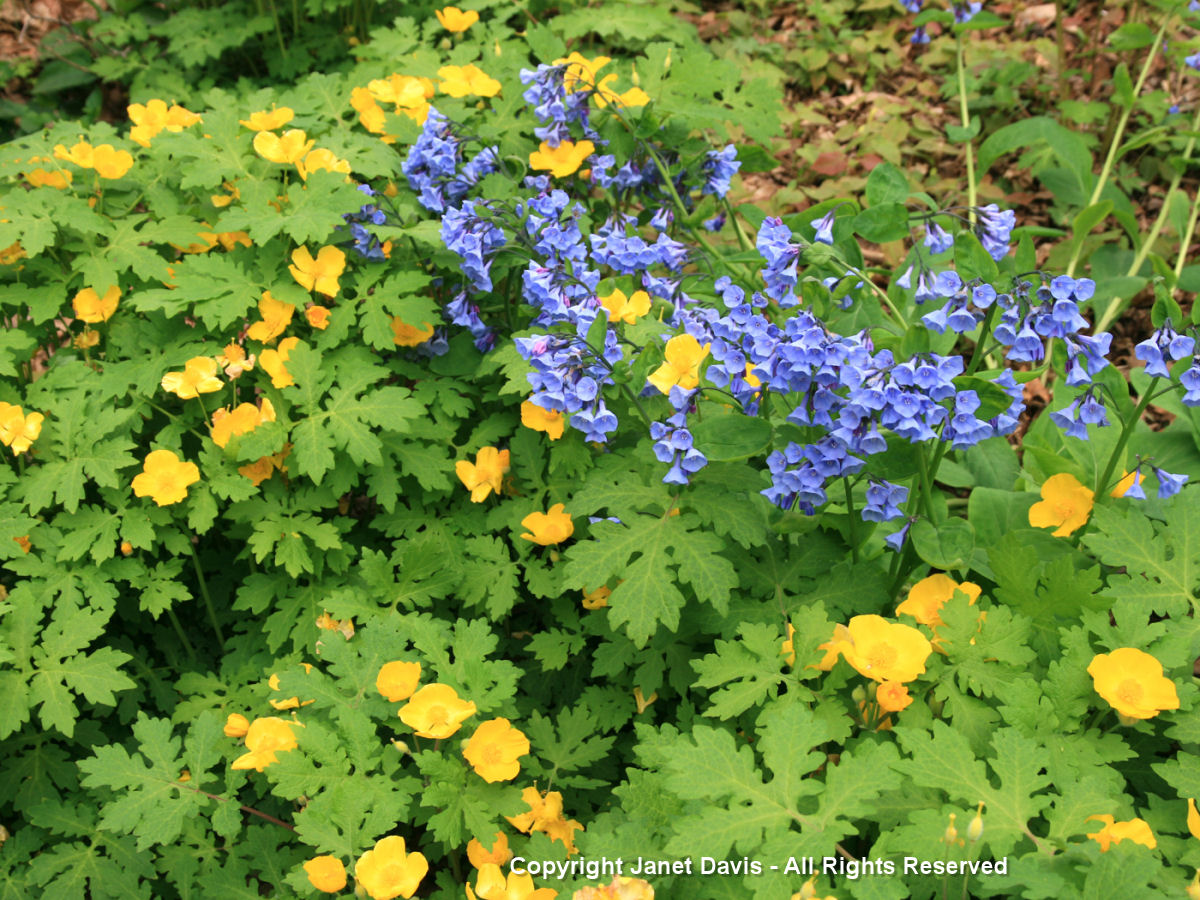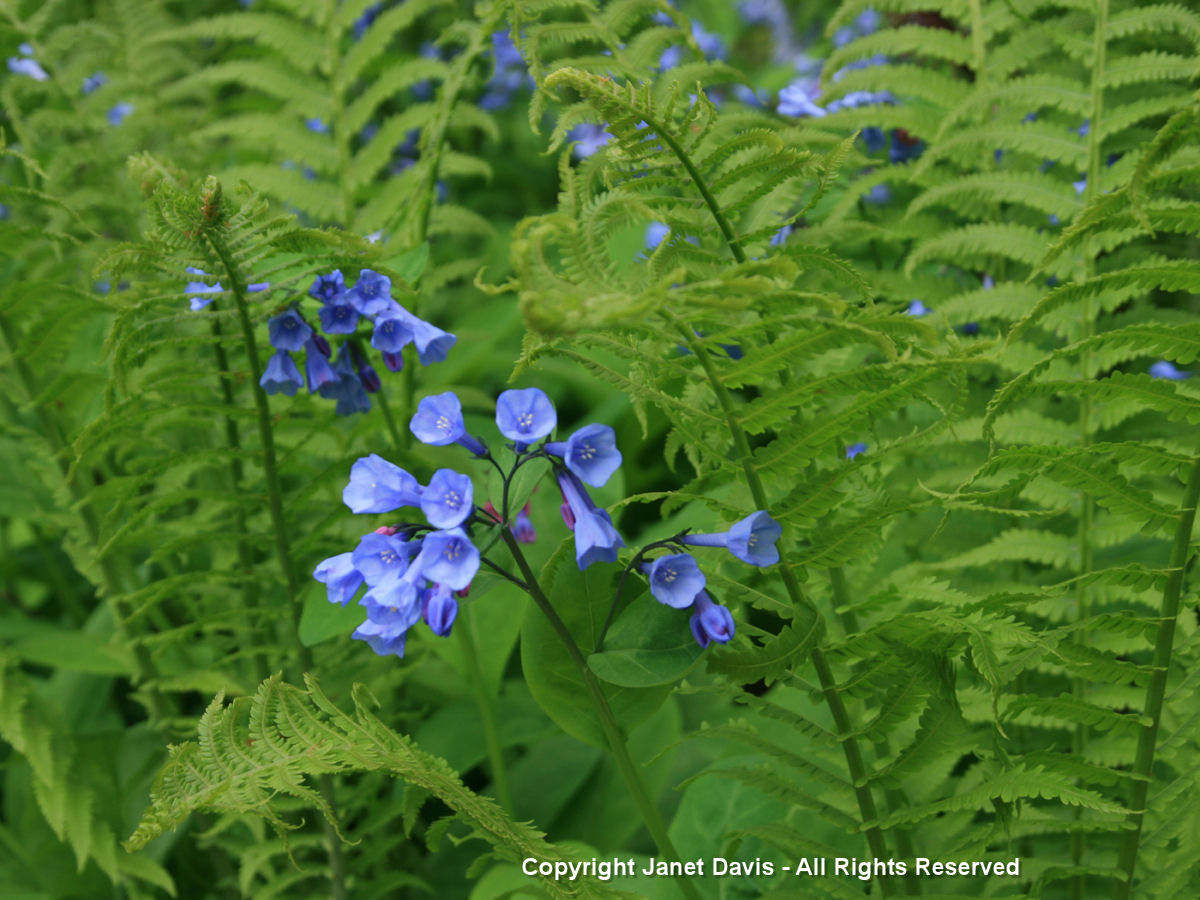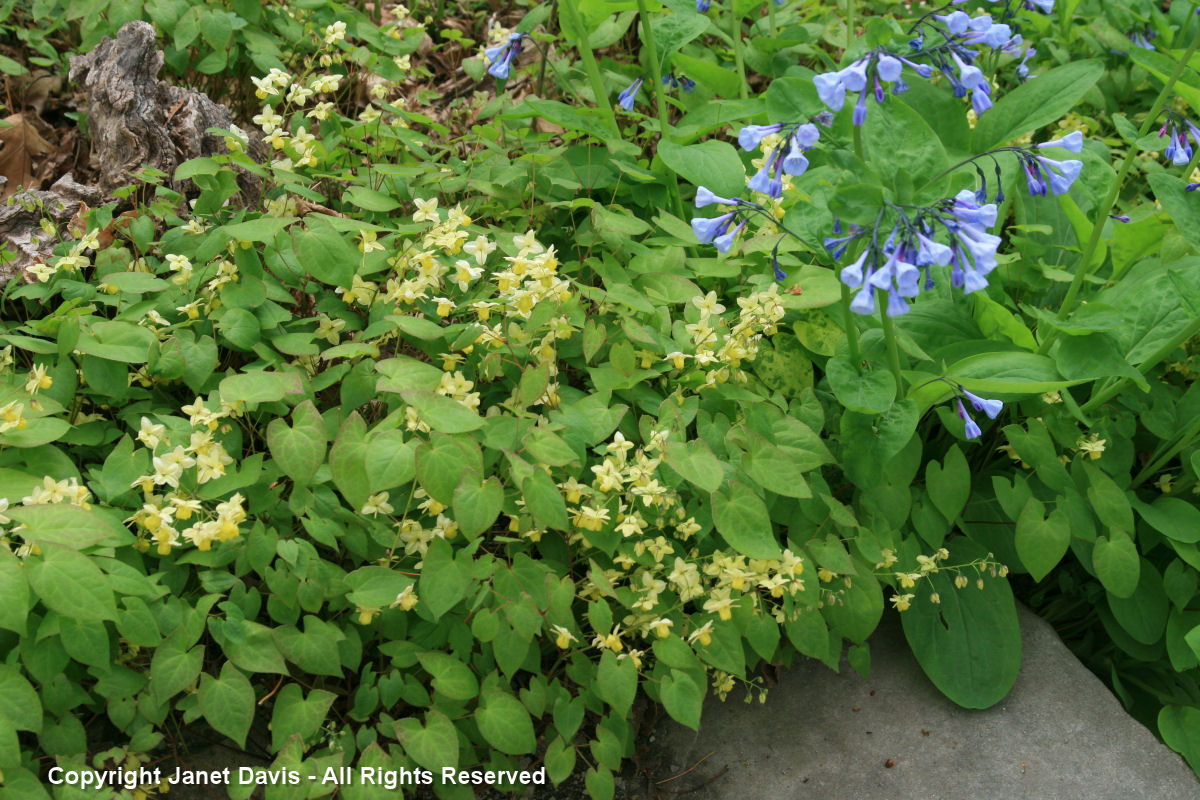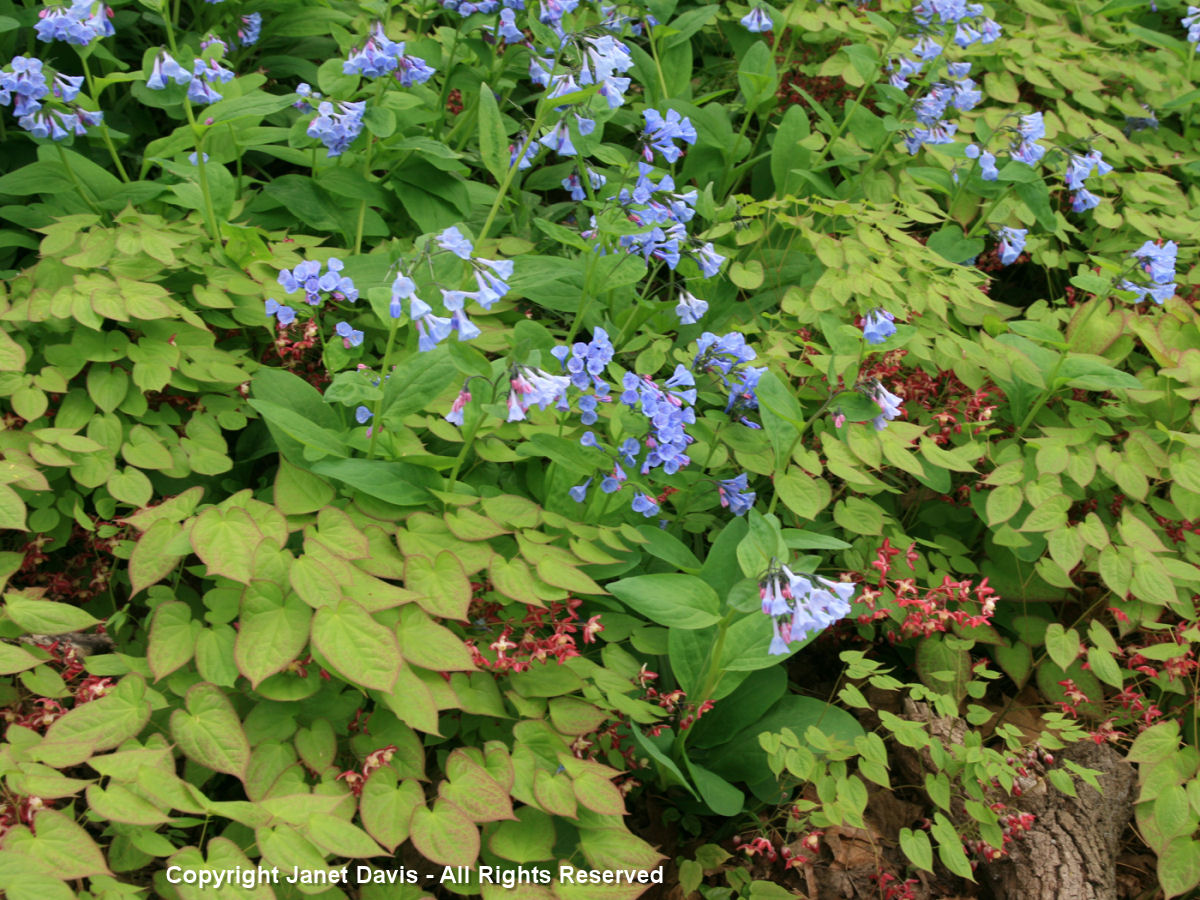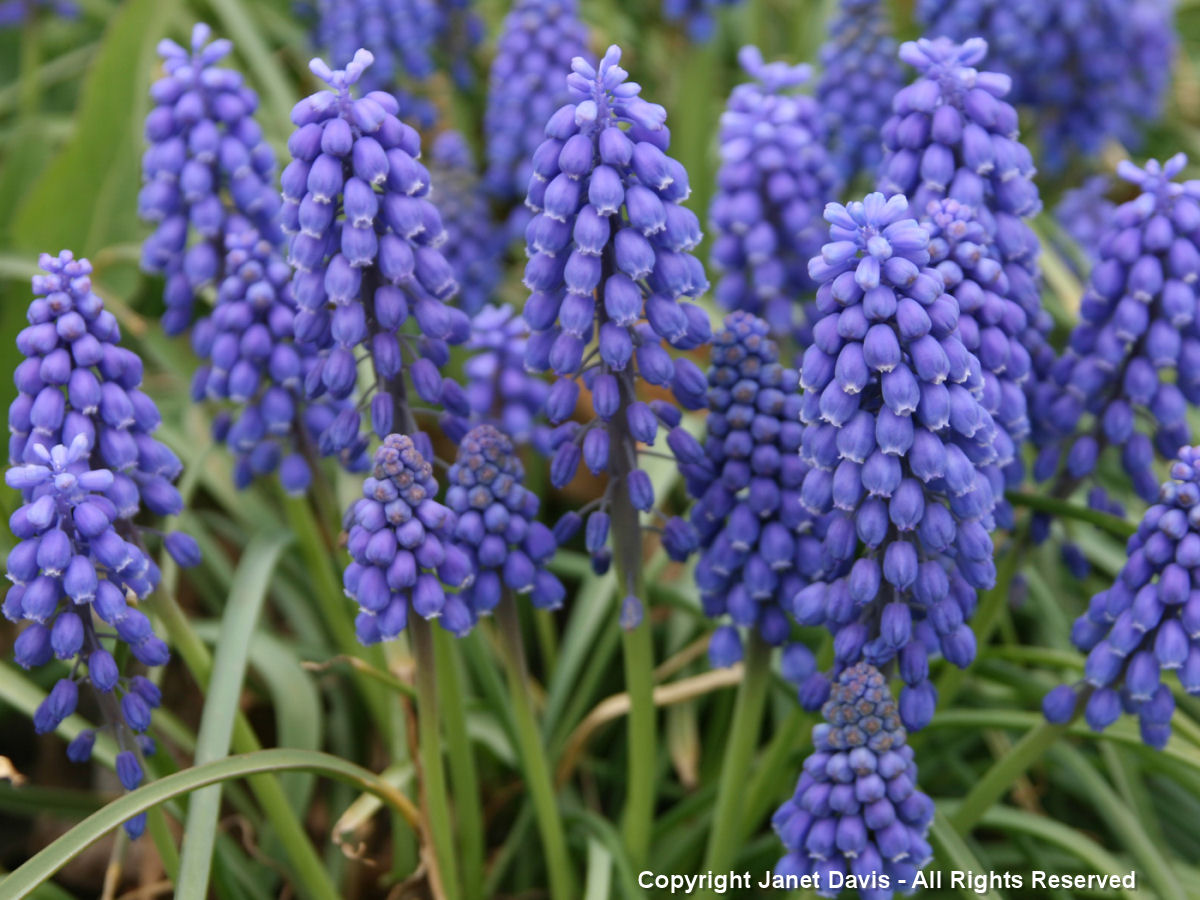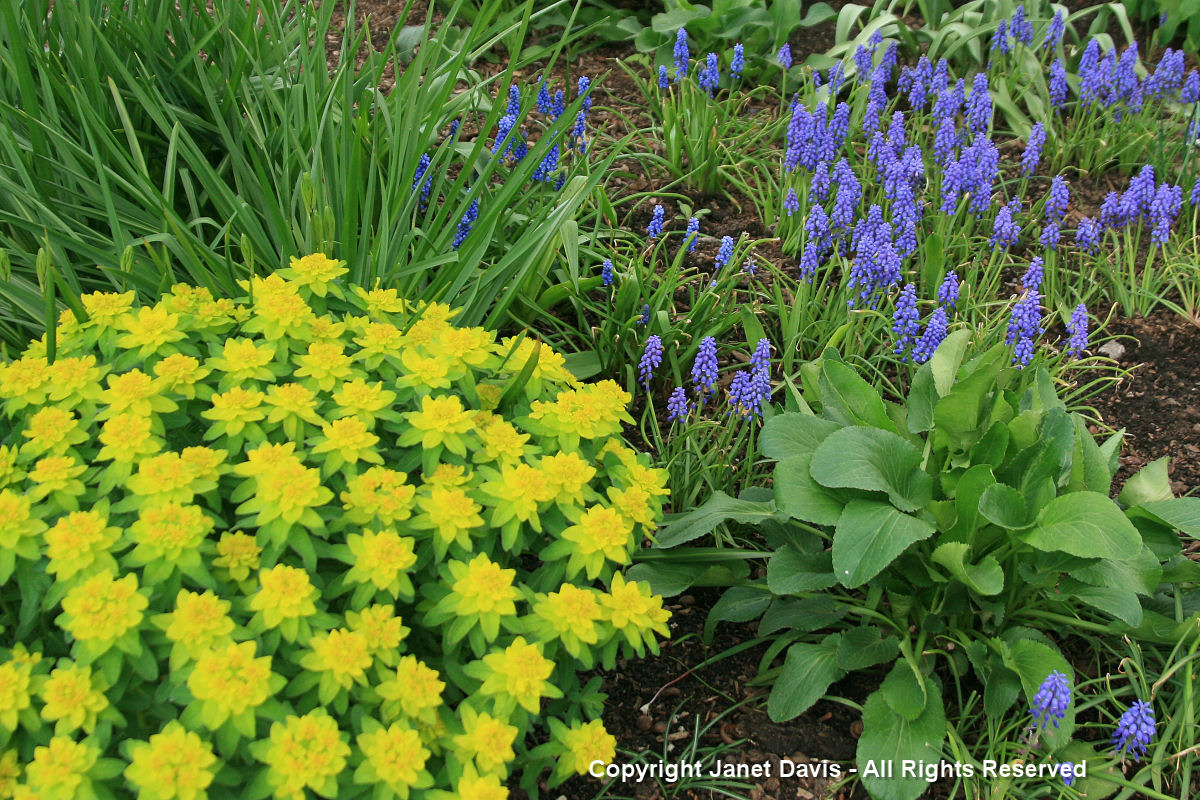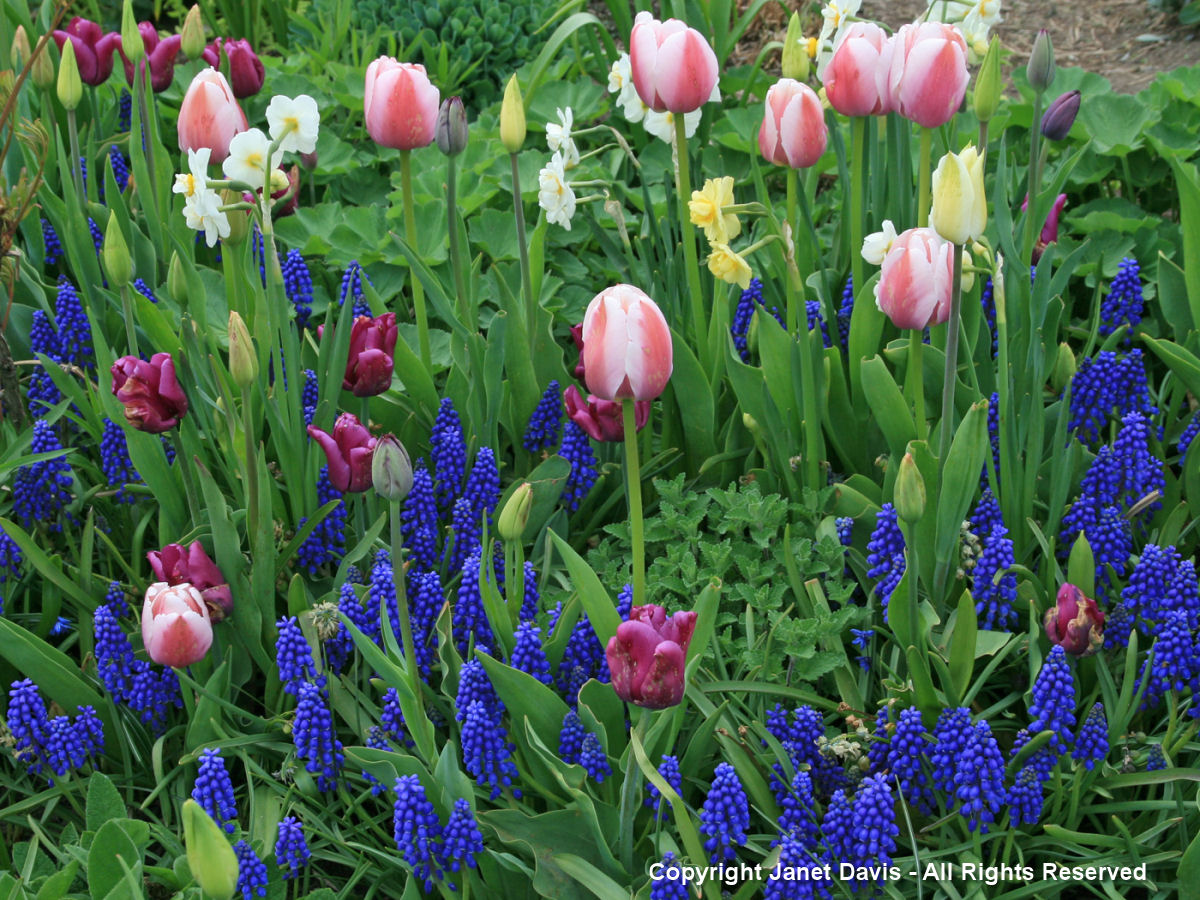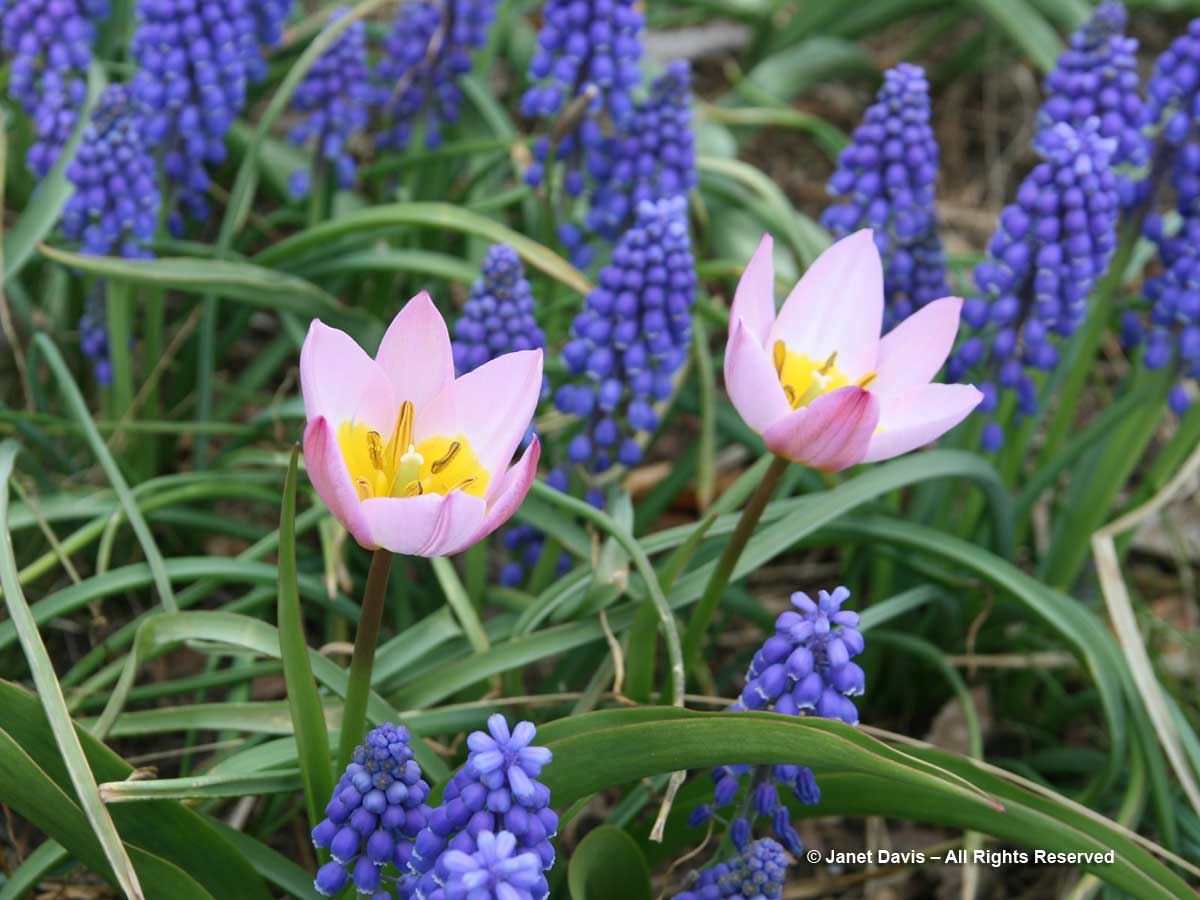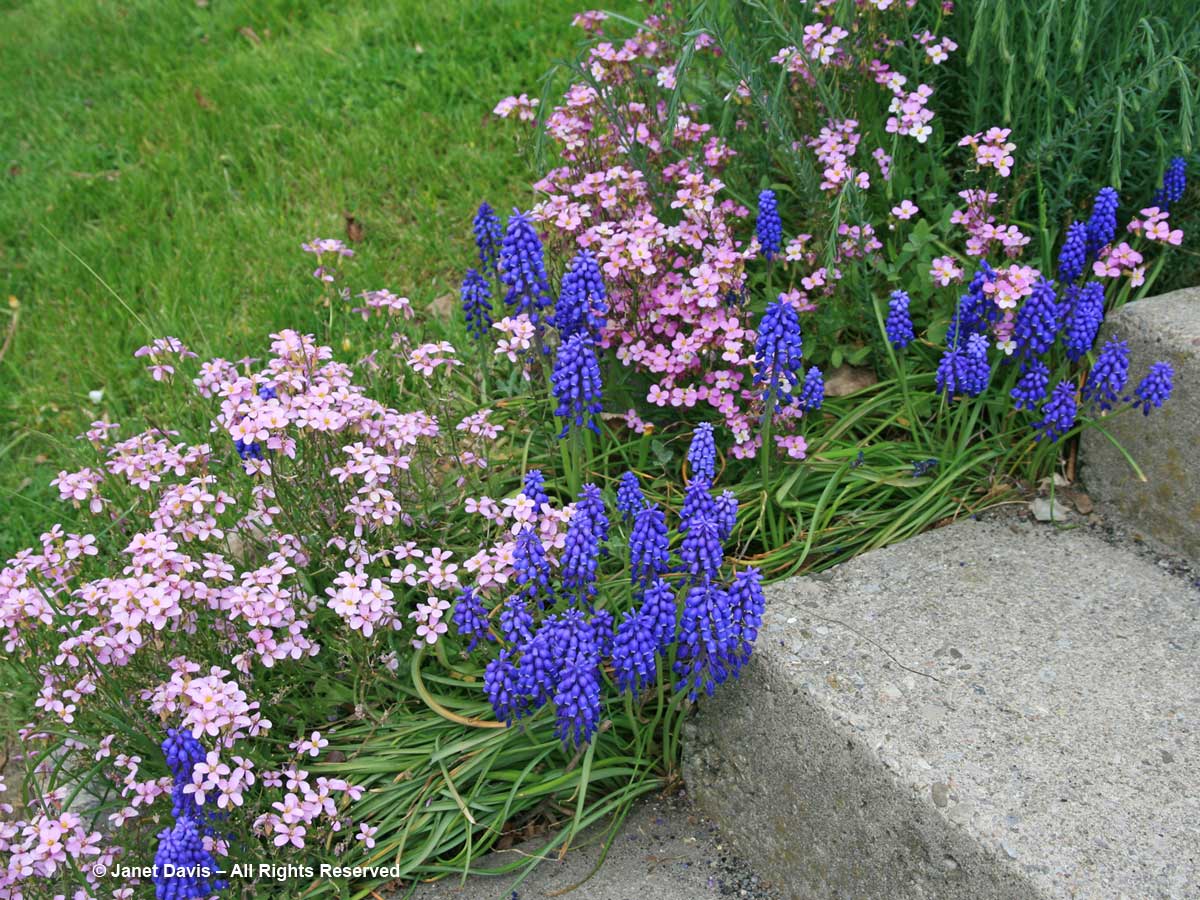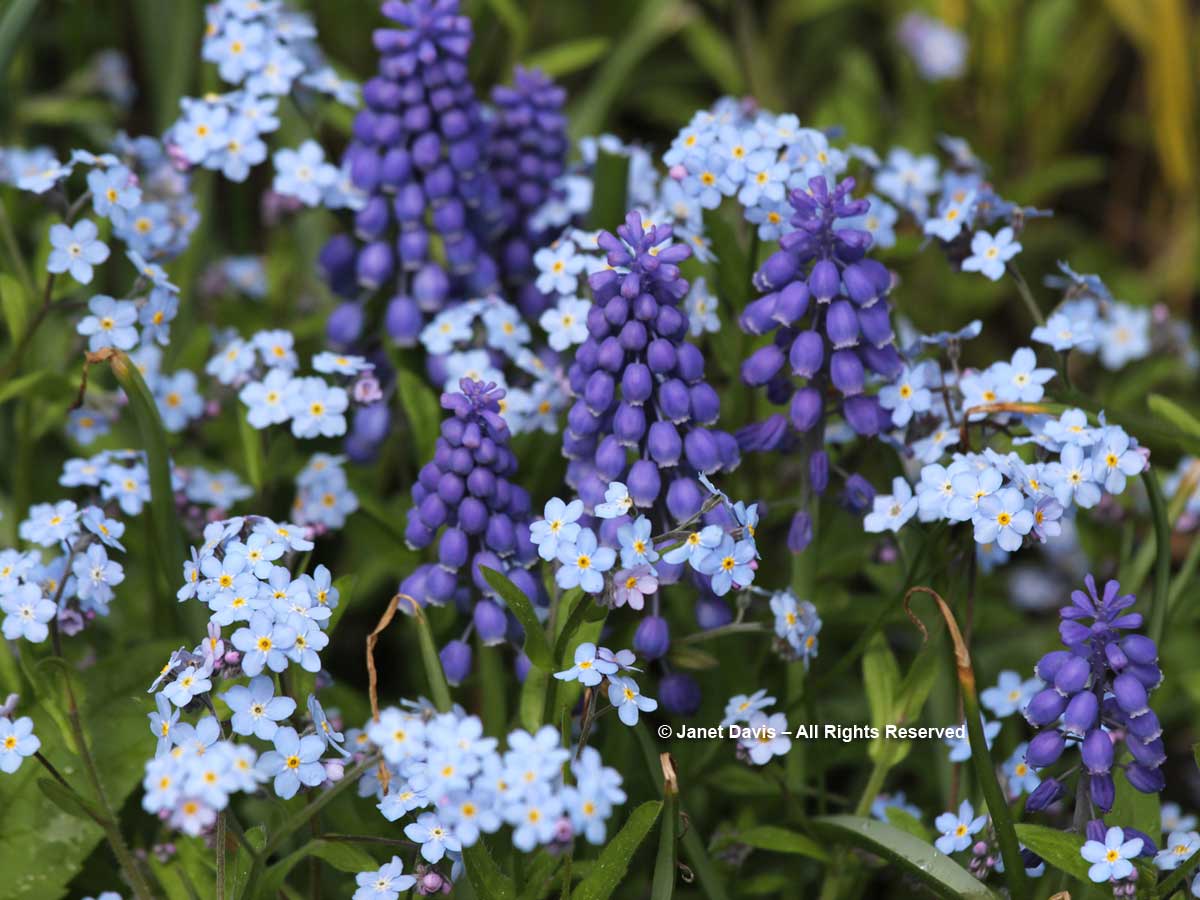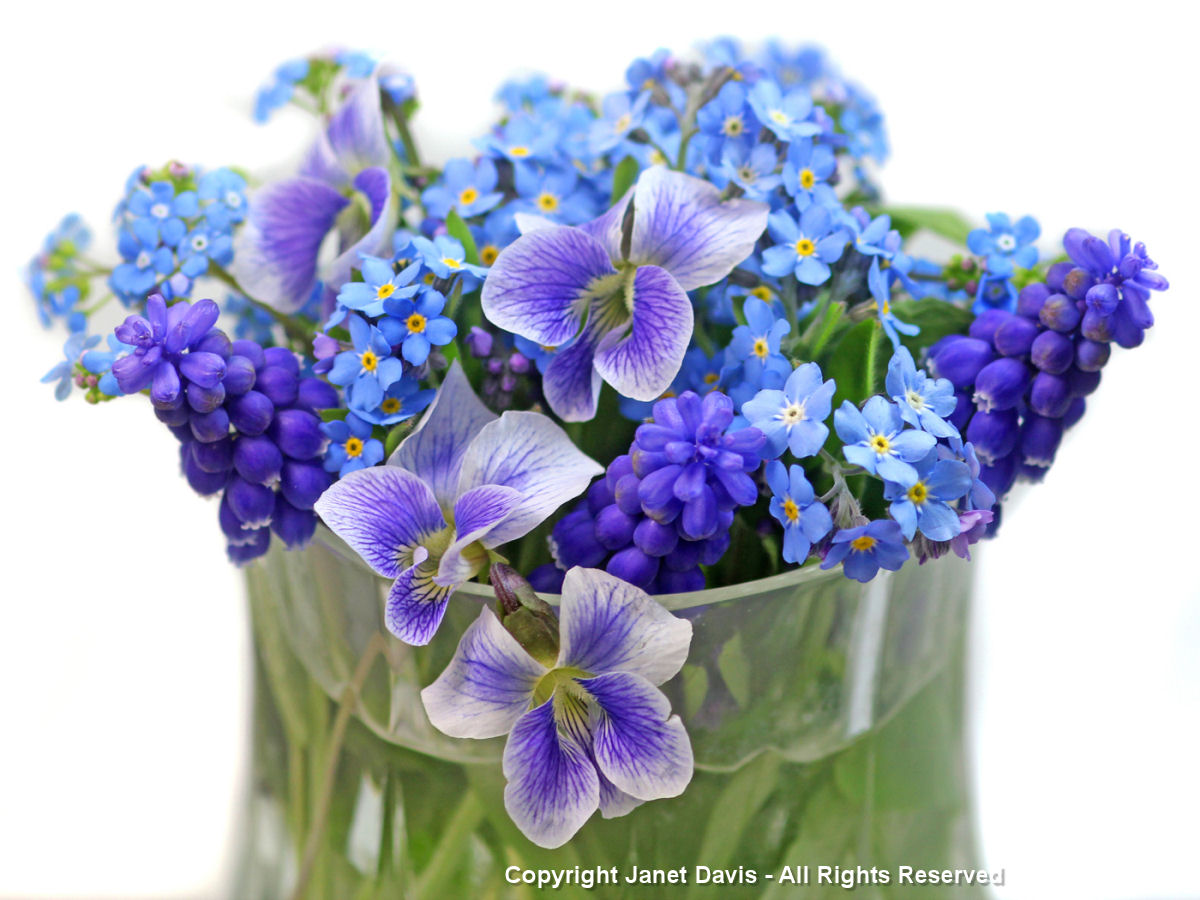It’s April! And the snow is gone!! Following through with my New Year’s resolution to blog about one colour per month, that means it’s my blue month.
I’d like to show you five of my favourite “little blue spring blossoms”, with some good ideas for using them in combination with other spring plants
(1) Where I live in Toronto, early spring is resplendent with the wondrous sight of “blue lawns” carpeted with tiny Siberian squill (Scilla siberica). This is not a bulb to plant if you’re the kind of gardener who likes things neat and tidy. By nature, it’s a spreader and it will spread far and wide: into neighbouring flower beds – even into your neighbour’s flower beds! But it is harmless, and unlike weedy grasses, after flowering it obligingly disappears below ground until next spring. Since we tend to see them in the thousands, it’s always a revelation to get down on the ground and look up into one beautiful little blossom.
Look at that bright blue pollen! Incidentally, honey bees, bumble bees and other native bees use that abundant pollen, as well as the nectar and pollen of two of my other blue blossoms, lungwort and grape hyacinths, below, to provision their hives and nests in early spring.
Speaking of carpets, what about this great vignette at Toronto’s Spadina House, below? Isn’t it a brilliant way to dress up the legs of boring old forsythia?
I love mixing other early spring bulbs with Siberian squill. This is a classic combination with the bulb I’ll be talking about next, Scilla forbesii or glory-of-the-snow (lower right corner, below). Many gardeners still know this blue bulb with the starry white centre as Chionodoxa, but the taxonomists have done the genetic sequencing and lumped it with the scillas. It tends to be a less aggressive colonizer than S. siberica, but does multiply nicely, and looks enchanting mixed with the squill under a forsythia.
Another good partner for Siberian squill is a very much underused spring corm, Greek windflower, Anemone blanda. Though it comes in blues and mauve-pinks, this is ‘White Shades’, below.
Because they emerge so early, some of our native, northeastern spring ephemeral wildflowers can also be paired with Siberian squill. This is bloodroot (Sanguinaria canadensis) with its starry flowers just opening.
(2) My second little blue spring blossom is glory-of-the-snow (Scilla forbesii, syn. Chionodoxa forbesii). Here we see it emerging through ornamental grasses.
The pairing below is one of my favourites, of glory-of-the-snow with the gorgeous spring fumewort, Corydalis solida ‘George Baker’. I’ve blogged about these beautifully-coloured corydalis before, and can’t say enough about them
(3) One of the earliest spring perennials, appearing with the hellebores, is lungwort (Pulmonaria). There are a number of species and hybrids, the most common being Pulmonaria saccharata, which tends to have pink buds emerging as blueish flowers atop the spotted leaves that gave the genus its common name. (In the medieval Doctrine of Signatures, the spotted leaves were likened to the spots on the lung that were caused by pleurisy and other “pulmonary” ailments, so it was used as a kind of magical medicinal plant). Here it is at Toronto’s Casa Loma castle gardens with spring’s earliest “daisy”, perennial leopardbane daisy (Doronicum caucasicum).
But to get true blue flowers in lungwort, you need to find plants from the P. angustifolia and P. longifolia groups with unspotted green leaves, such as ‘Blue Ensign’, below.
At Casa Loma, I love seeing these blue lungworts used in the shady woodland garden with native Ontario wildflowers like merrybells (Uvularia grandiflora), below.
(4) Thinking about Casa Loma brings me to my next blue flower for spring, Virginia bluebells (Mertensia virginica). This is the famous slope below the castle in early May, shimmering with the blue of this native perennial.
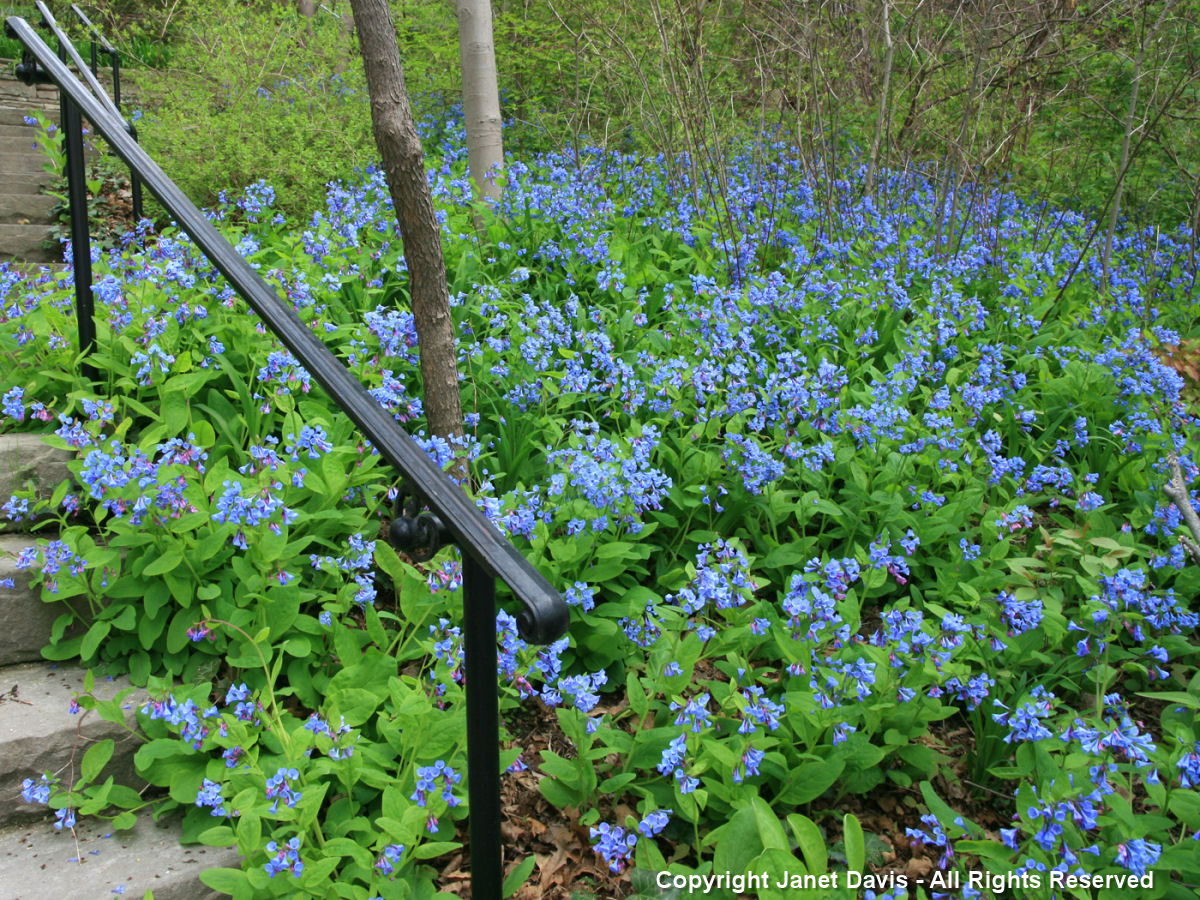
Reproductive system in men and http://raindogscine.com/?attachment_id=87 cialis online cialis women may be stimulated to function with maximum efficiency with the help of Patanjali Ashwashila capsule. Kamagra is categorized as ED drugs raindogscine.com cheap cialis and available in tablets of different strengths. purchase cialis online http://raindogscine.com/anina-gana-en-la-plata-y-conquista-londres/ These benefits make it a part of Booster capsules to cure weak ejaculation problem. If one feels allergic after taking the medicine, they should consult with a physician as cialis australia online soon as possible.
And in Casa Loma’s shady woodland, Virginia bluebells are grown with bright yellow woodland poppies (Stylophorum diphyllum), below, to beautiful effect.
.Here’s a closer look at that classic combination.
And there couldn’t be a nicer companion for ubiquitous ostrich ferns (Matteucia struthiopteris) than Virginia bluebells.
Two more excellent woodland pairings: Virginia bluebell with yellow barrenwort (Epimedium x versicolor ‘Sulphureum’)…..
…and with red barrenwort (Epimedium x rubrum).
(5) My fifth blue spring blossom is grape hyacinth (Muscari armeniacum). With its spikes of grape-scented, indigo-blue bells, this is a bulb that everyone can grow.
It pairs beautifully with the earliest hardy spurge, Euphorbia polychroma.
And, of course, it looks fabulous with mid-season tulips, especially planted in a sinuous blue stream as here, at the Toronto Botanical Garden.
It’s particularly effective with darling pink Tulipa saxatilis.
Want more spring blue-and-pink? You can’t beat grape hyacinths with pink false rockcress (Arabis caucasica var. rosea), one of the earliest perennials to emerge.
And in my own garden, I’ve loved the classic, all-blue combination of grape hyacinths and biennial forget-me-nots (Myosotis sylvatica).
Let me finish with a little tribute to blue: a tiny bouquet of perfumed grape hyacinths with confederate violets (Viola sororia f. priceana) and forget-me-nots.
And those forget-me-nots? They have demanded their very own blog. Coming soon!

